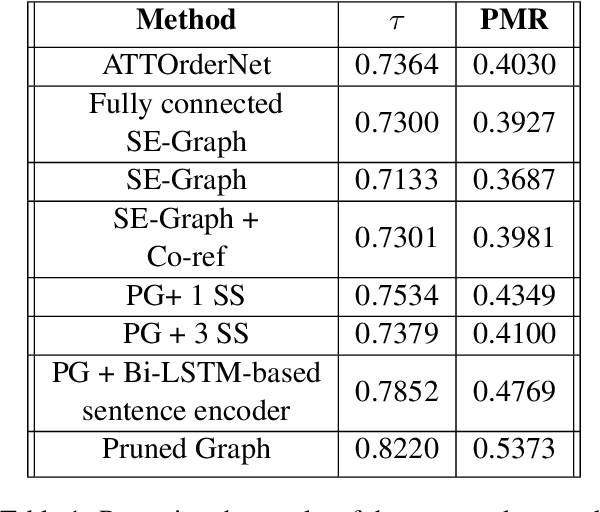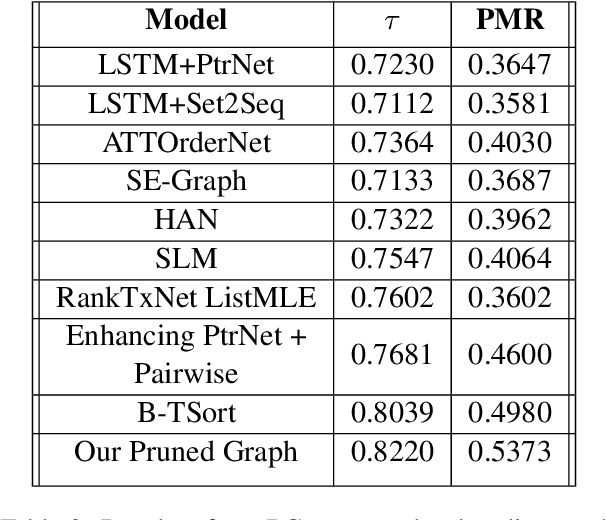Pruned Graph Neural Network for Short Story Ordering
Paper and Code
Mar 13, 2022


Text coherence is a fundamental problem in natural language generation and understanding. Organizing sentences into an order that maximizes coherence is known as sentence ordering. This paper is proposing a new approach based on the graph neural network approach to encode a set of sentences and learn orderings of short stories. We propose a new method for constructing sentence-entity graphs of short stories to create the edges between sentences and reduce noise in our graph by replacing the pronouns with their referring entities. We improve the sentence ordering by introducing an aggregation method based on majority voting of state-of-the-art methods and our proposed one. Our approach employs a BERT-based model to learn semantic representations of the sentences. The results demonstrate that the proposed method significantly outperforms existing baselines on a corpus of short stories with a new state-of-the-art performance in terms of Perfect Match Ratio (PMR) and Kendall's Tau (Tau) metrics. More precisely, our method increases PMR and Tau criteria by more than 5% and 4.3%, respectively. These outcomes highlight the benefit of forming the edges between sentences based on their cosine similarity. We also observe that replacing pronouns with their referring entities effectively encodes sentences in sentence-entity graphs.
 Add to Chrome
Add to Chrome Add to Firefox
Add to Firefox Add to Edge
Add to Edge